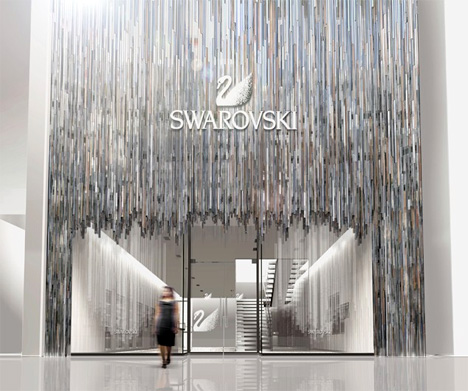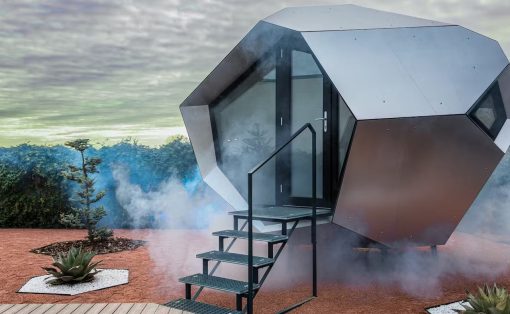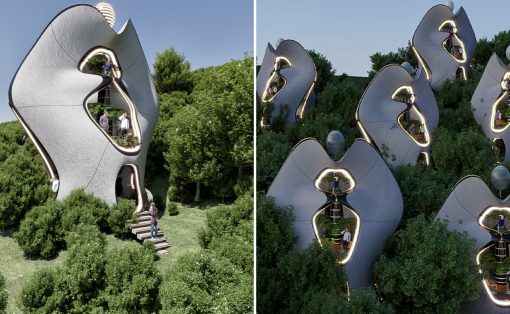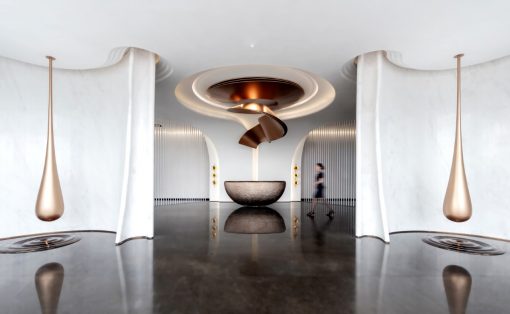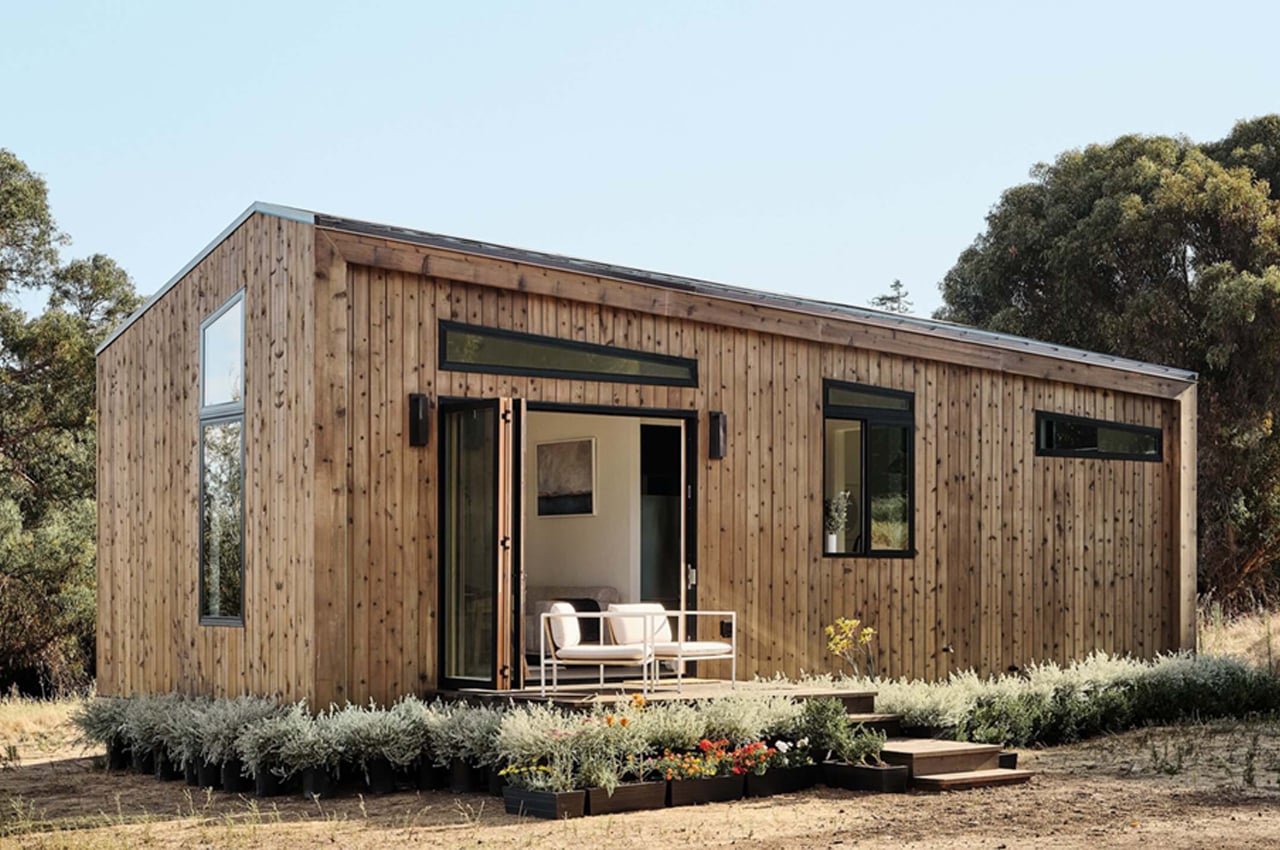
Prefabricated architecture has been gaining a lot of popularity and momentum recently! It basically involves making buildings or building various components at a particular location, one that is better suited for construction, and then once completed, transporting it to the final site or location. Prefab architectural designs have a multitude of benefits – they keep costs down, ensure projects are more sustainable and efficient, and they also prioritize and pay attention to simplicity and modularity. And we have curated a collection of our favorite prefabricated designs for you – from an AI-enabled prefab tiny home to a home that combines Scandinavian simplicity with a breezy Californian twist – these prefabricated designs are a part of an integral growing trend in modern architecture, and could be the future of it as well!
1. Koto Design x Adobu’s prefab home
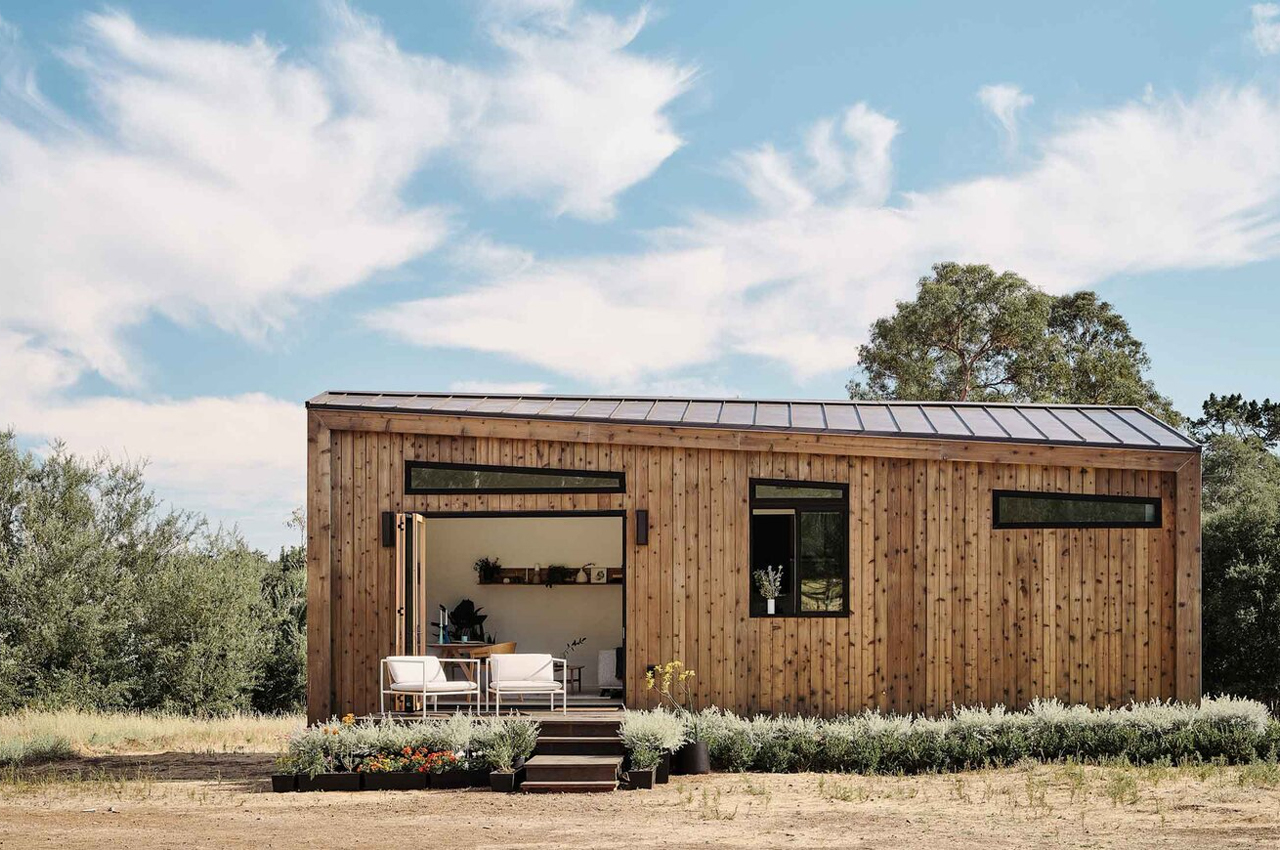
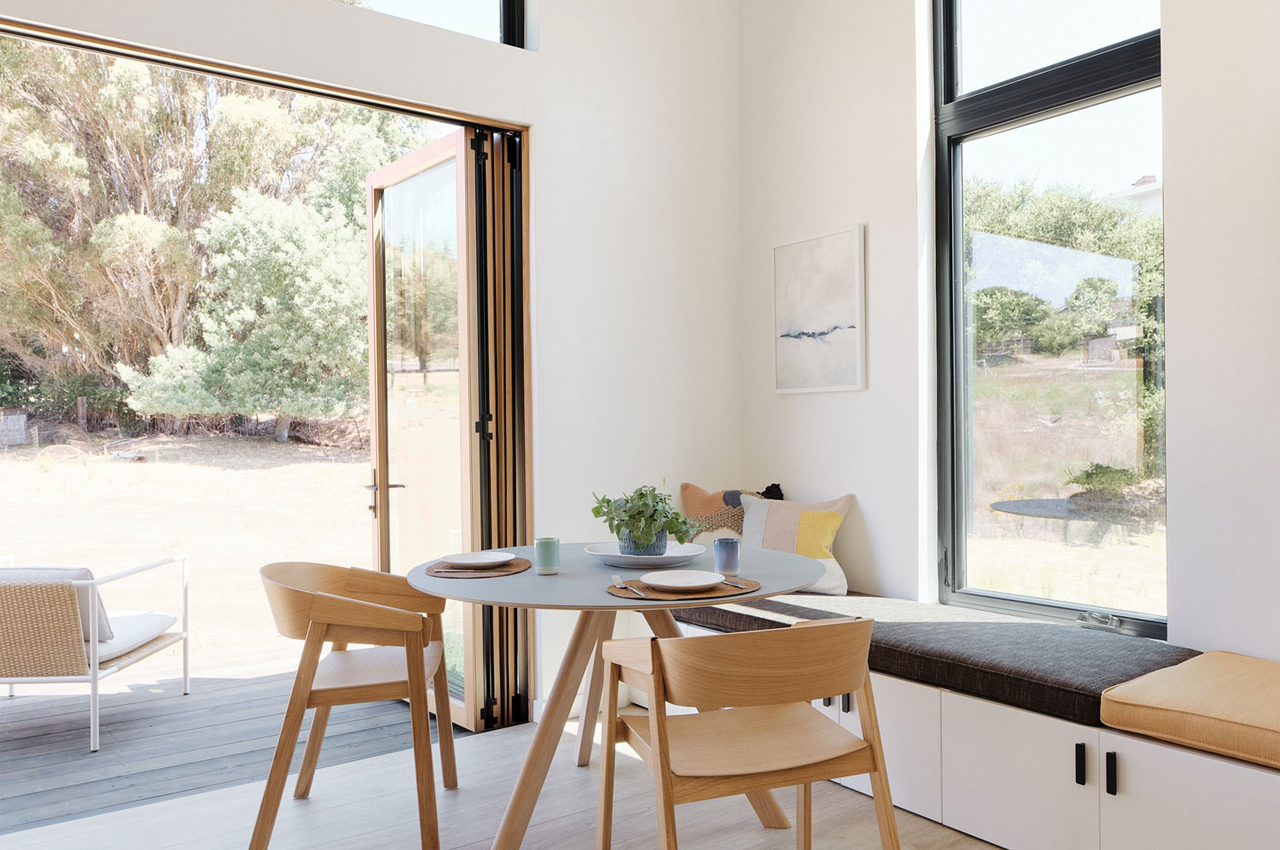
Based in the English seaside village of Westward Ho!, the architecture studio Koto Design captures the mellow vibe of a day spent at the seashore and translates it into a home space. Inspired by Scandinavian simplicity and Japanese minimalism, the result comes through breezy, open floor layouts and organic building materials.
Why is it noteworthy?
The architecture studio is known for its extensive catalog of sustainable, prefabricated tiny homes that can be transported to locations across the globe. In a recent collaboration with the USA-based, backyard home-building company Adobu, the two studios worked together to construct a tiny, prefabricated home that marries Scandinavian design with a Californian twist.
What we like
- Provides a semi-outdoor lifestyle
- Is carbon-neutral, and provides off-grid capabilities
What we dislike
No complaints!
2. The Folding Dream House
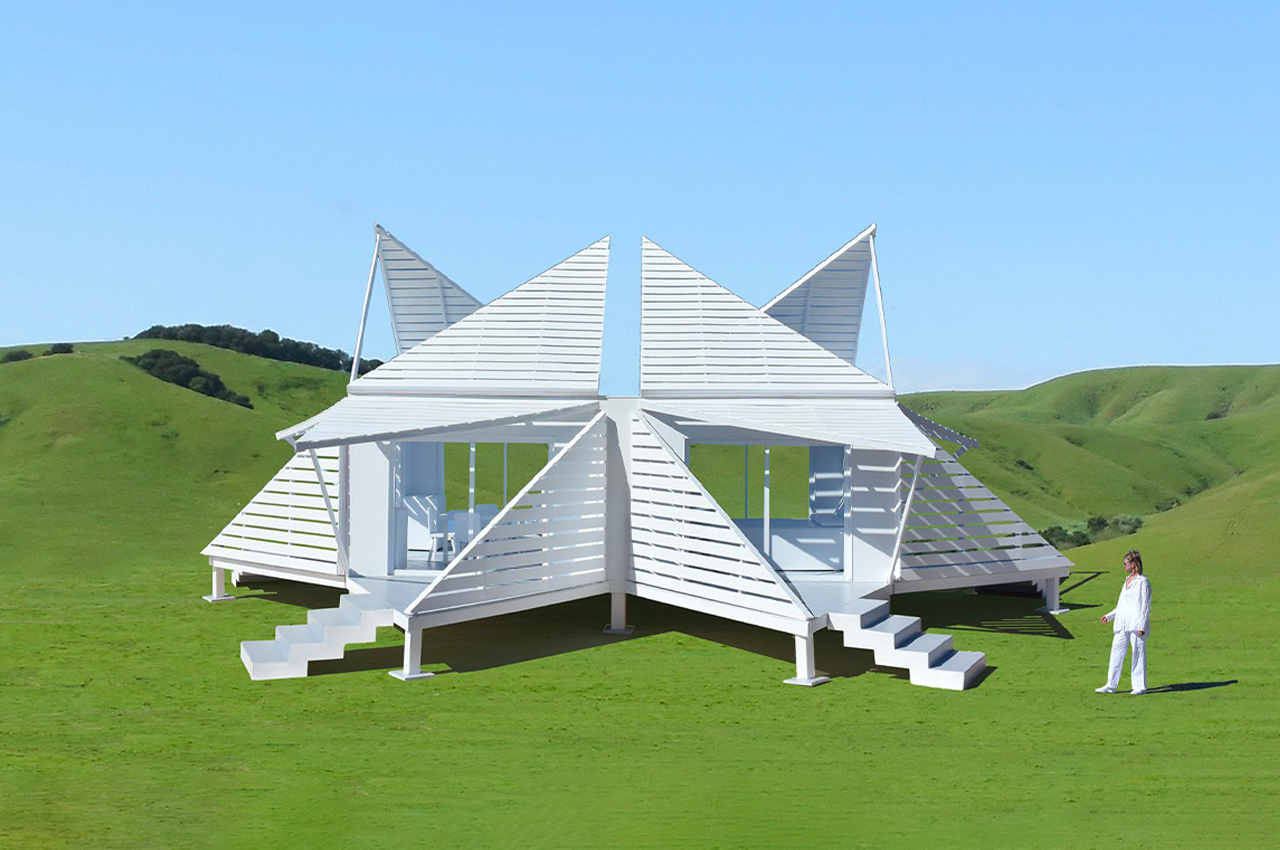
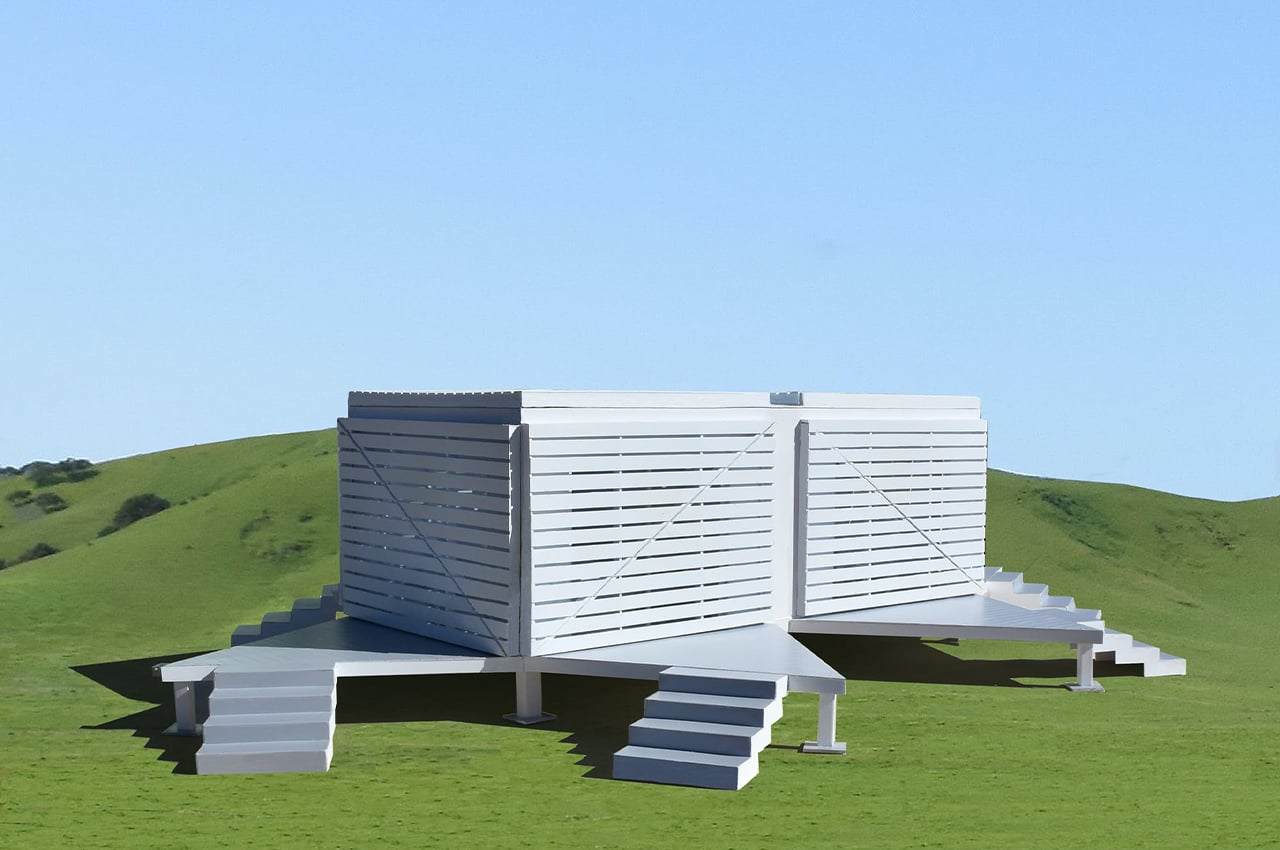
Michael Jantzen, a multidisciplinary artist based in New Mexico, is one artist who seems endlessly inspired by geometry. Merging sustainability, architecture, and technology, Jantzen developed an adaptable modern home called The Folding Dream House that expands from an enclosed, cubic structure into a multi-layered, dream home.
Why is it noteworthy?
From its initial conception, the Folding Dream House was designed as a place to sleep. Amounting to the size of a conventional hotel room, the Folding Dream House consists of two prefabricated, portable modules. Each rectangular module is envisioned mounted atop an elevated, triangular foundation that connects the home’s expandable support beams to its frame. On each facade of the Folding Dream House, Jantzen envisioned triangular overhangs and partitions as foldable panels that expand from the home’s frame.
What we like
- The panels can be folded open or closed in many different ways around the modules in order to accommodate various functional and/or aesthetic requirements
What we dislike
- It’s still in the conceptual phase!
3. iHouse
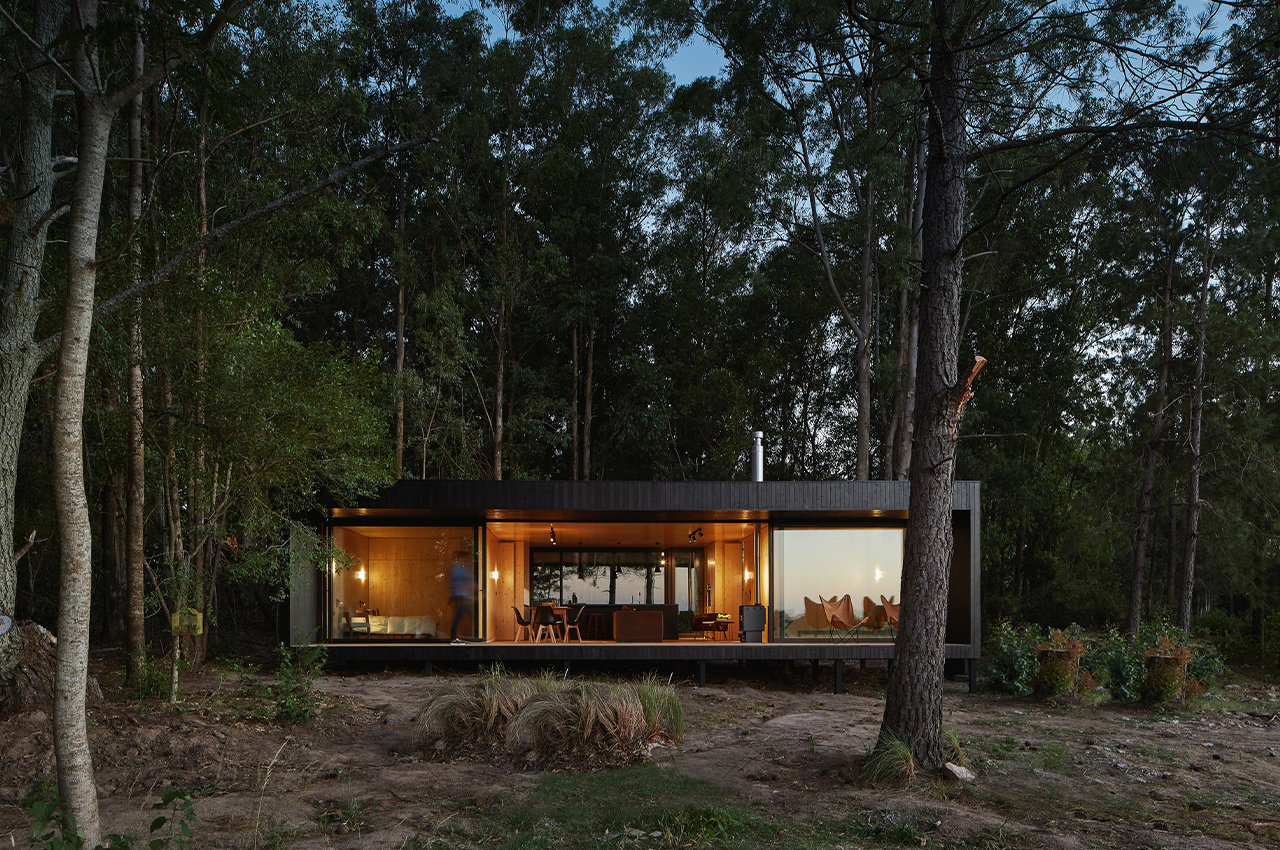
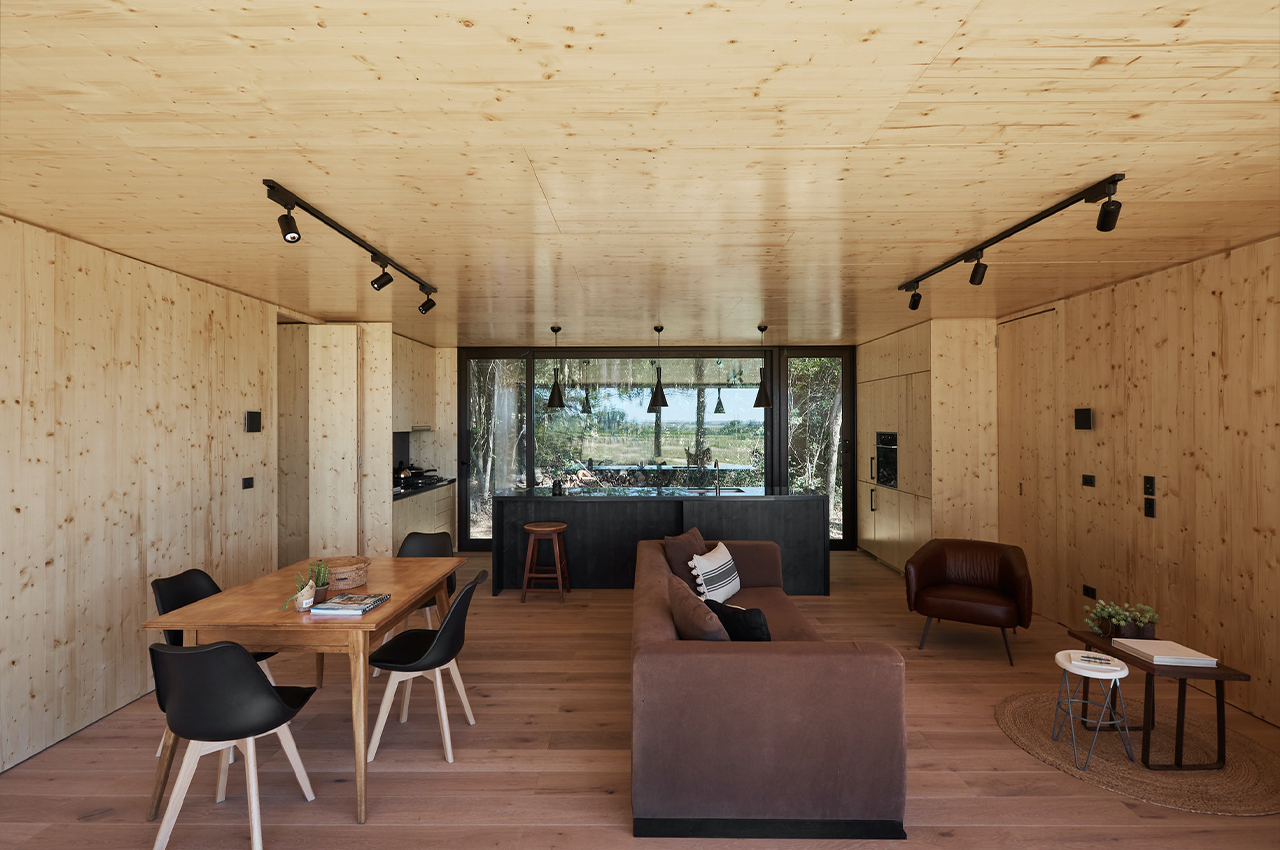
Montevideo-based architecture firm iHouse constructs prefabricated homes using the latest dry construction methods currently trending on the international stage. With only 70 days to build a home for Conrado, an Uruguayan living in London, on his family’s property in Colonia, iHouse was well-equipped to take on the project. Formed by the merging of two modules, Casa ZGZ was constructed offsite and then installed on the family’s property in just five days.
Why is it noteworthy?
As Colonia is one of Uruguay’s oldest towns, the team behind Casa ZGZ hoped to maintain the spirit of the region’s historical architecture while contemporizing the cabin to accommodate modern needs. The single-level residence is clad in black in an effort to present hide the home in plain sight amongst the many elements of nature that surround it. The black exterior also warms up the home’s wooden interior, which is paneled with wood certified by the Forest Stewardship Council.
What we like
- Minimizing the home’s impact on the region’s environment and land, Casa ZGZ was constructed offsite in two modules
- Coexists in harmony with a space alien to its language
What we dislike
- It could have been equipped with another story
4. The Legend Two X
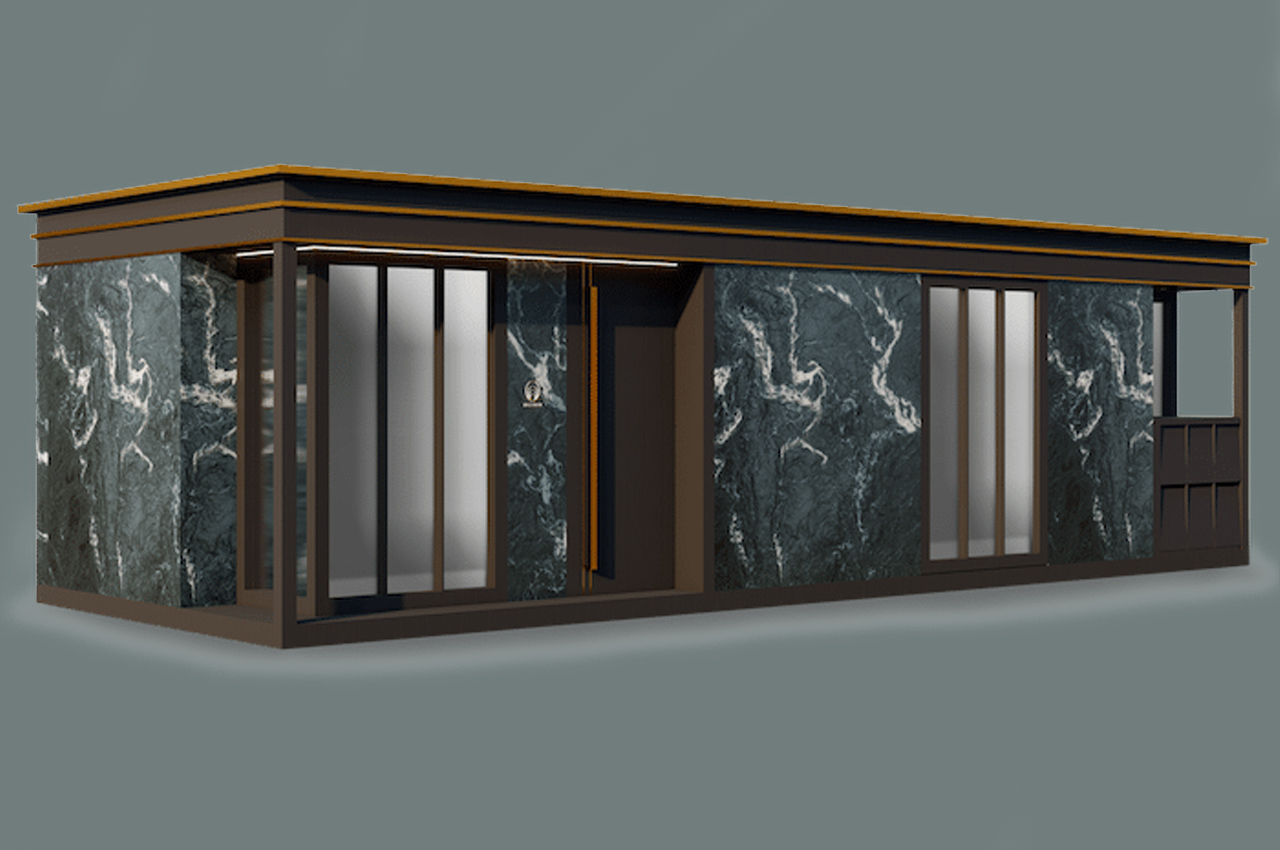
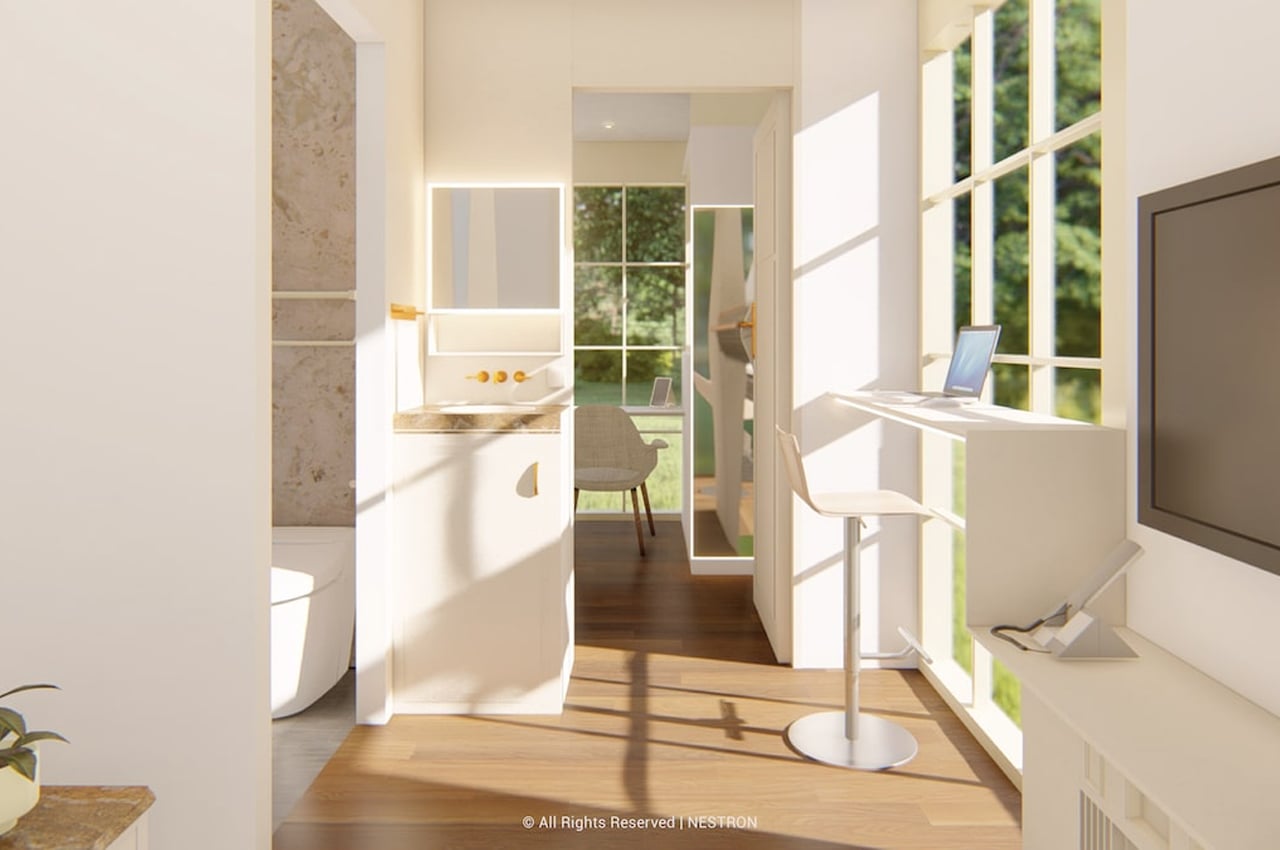
Nestron, a new generation of tiny living home builders, designs fully prefabricated homes with built-in furniture and a smart home system, delivered in a ready-to-live formula. The Legend Two from prefabricated architecture company Nestron is a prefab, tiny home that marries stylish design with classical elements. The homebuilders at Nestron released the next generation of Legend Two, dubbed Legend Two X.
Why is it noteworthy?
Built as an extension to the Legend Two series, the X generation expands its preceding model by 7.9 square meters, for a total of 33.4 square meters. The builders at Nestron expanded the prefabricated tiny home to accommodate full-size appliances like refrigerators and washing machines without compromising the home’s available living space. Inspired by classic American architecture, the exterior of Legend Two X’s prefab homes keeps an approachable, elegant appearance while maintaining a bit of decorative restraint.
What we like
Combines the traditional elements of classic American architecture with some mid-century modern and Scandinavian-inspired design elements
Brings back a sense of nostalgia with this rustic design
What we dislike
No complaints!
5. The Hithe
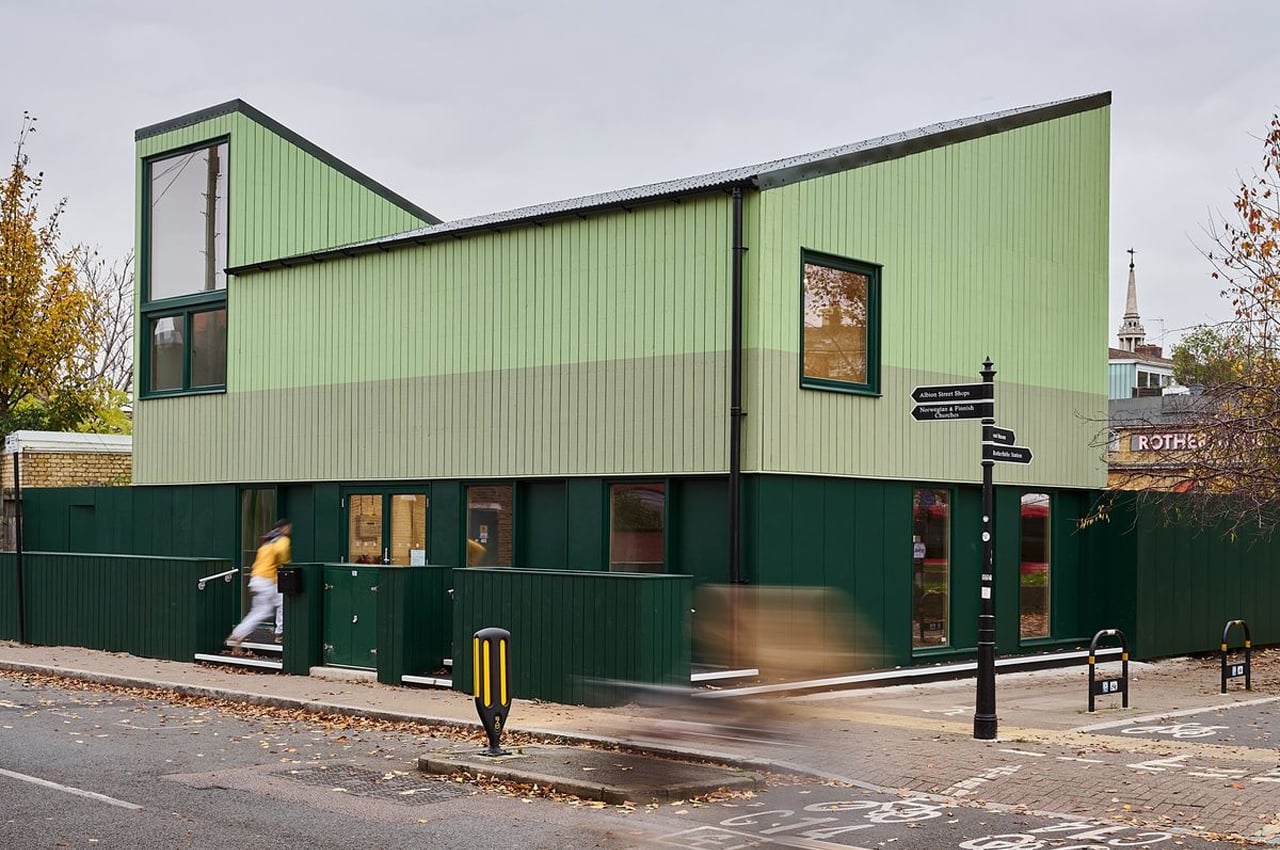
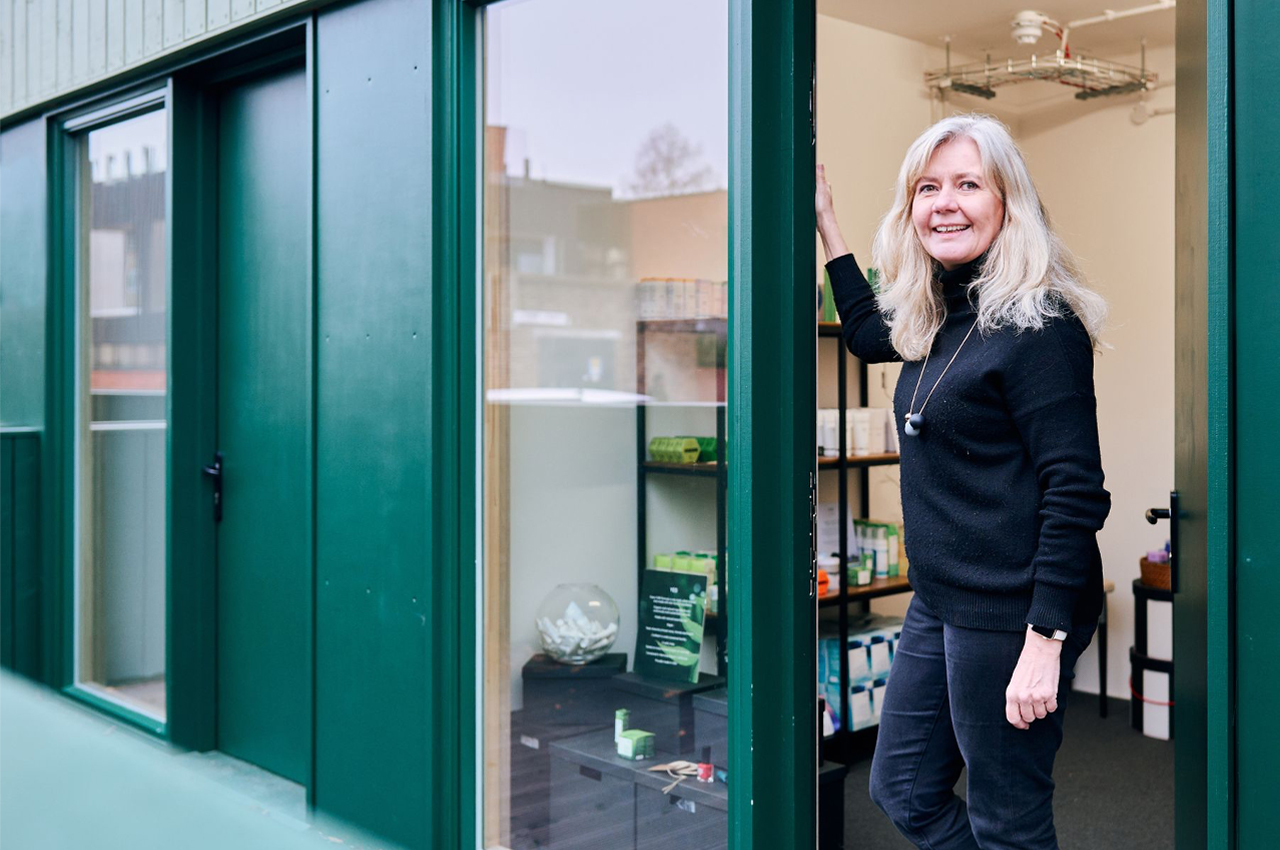
The Hithe is a prefabricated, demountable structure located in London’s Rotherhithe community designed to support local businesses while bridging the city’s communities with modern changes. The Hithe is a 200sqm is located on Albion Street, the neighborhood social hub. Prefabricated by design, the structure consists of five modules that were constructed offsite and then assembled on Albion.
Why is it noteworthy?
New social infrastructure is rising in the London neighborhood, providing residents with a meeting hub that could function as the very bridge that maintains the neighborhood’s identity while connecting it with imminent modern changes. The Hithe is a new, fully demountable, and re-locatable multipurpose structure designed by IF_DO Architects to bring the community of Rotherhithe together.
What we like
- Provides city residents with a common space for work, social, and commercial purposes
- In an effort to reduce the need for built-in circulation spaces, each of the ten micro studios is accessible from the building’s exterior
What we dislike
- Unsure whether it can actually meet its goal of reducing gentrification
6. Prefab Pod

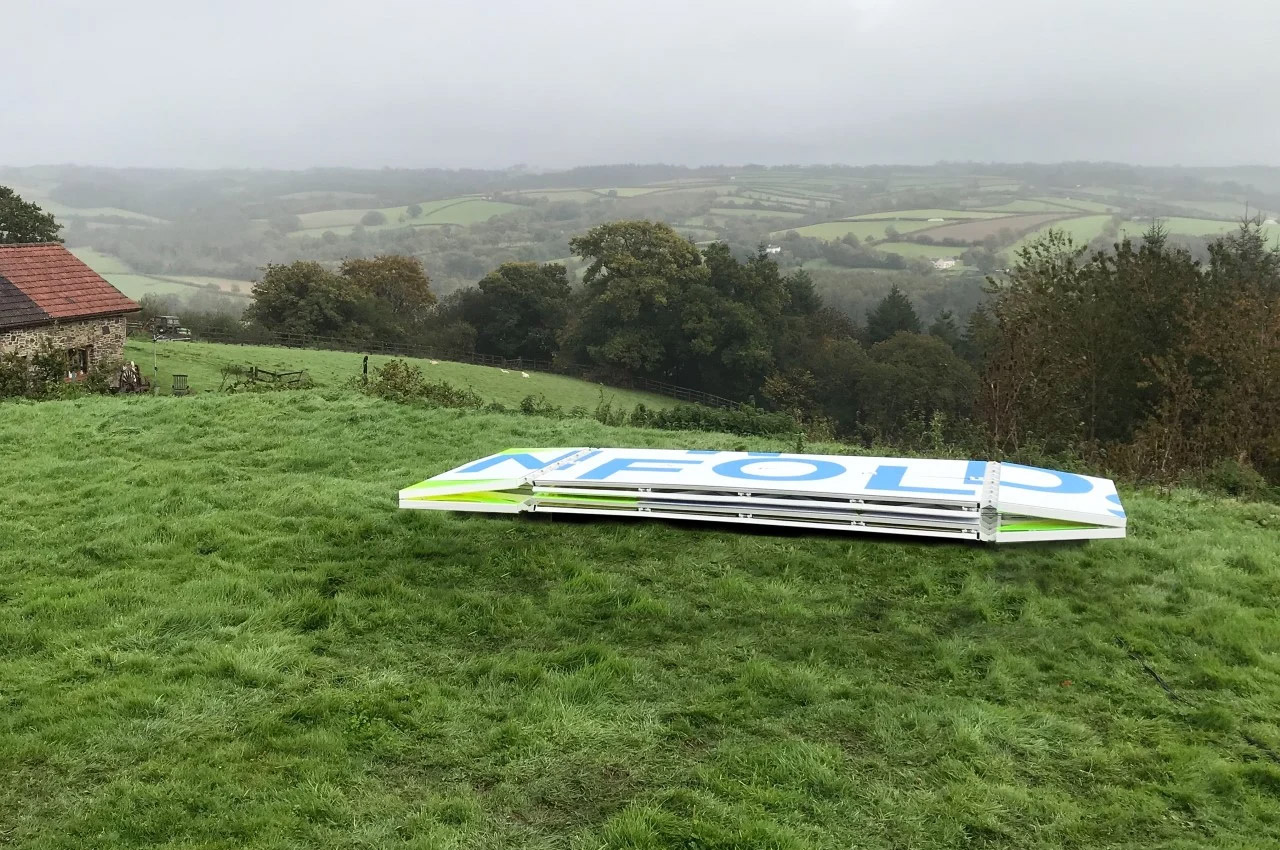
Originally designed as a modular pod for luxury getaways, Hariri & Hariri Architecture’s prefab folding structure is now proving to be an incredibly cost and labor-effective solution to ongoing refugee crises caused by political unrest and climate change. The prefabricated structure ships as a flat-packed unit and can be opened out and assembled in mere minutes with just a crane and minimal manual labor, allowing you to set up instant refugee shelters anywhere.
Why is it noteworthy?
Conceptually, the pod’s unique folding structure is inspired by Origami. It’s designed to fold flat when not in use and can be shipped as a set of flat palettes stacked together and assembled on-site. When assembled, the walls open outwards and lock into a hexagonal shape, making the pod’s structure geometrically stable and modular.
What we like
- Iranian architects Gisue and Mojgan Hariri designed the prefab pod based on their own experience of losing their home
- The single-story pods can also be linked together to create larger living units
What we dislike
No complaints!
7. A-Fold’s line of prefabricated homes
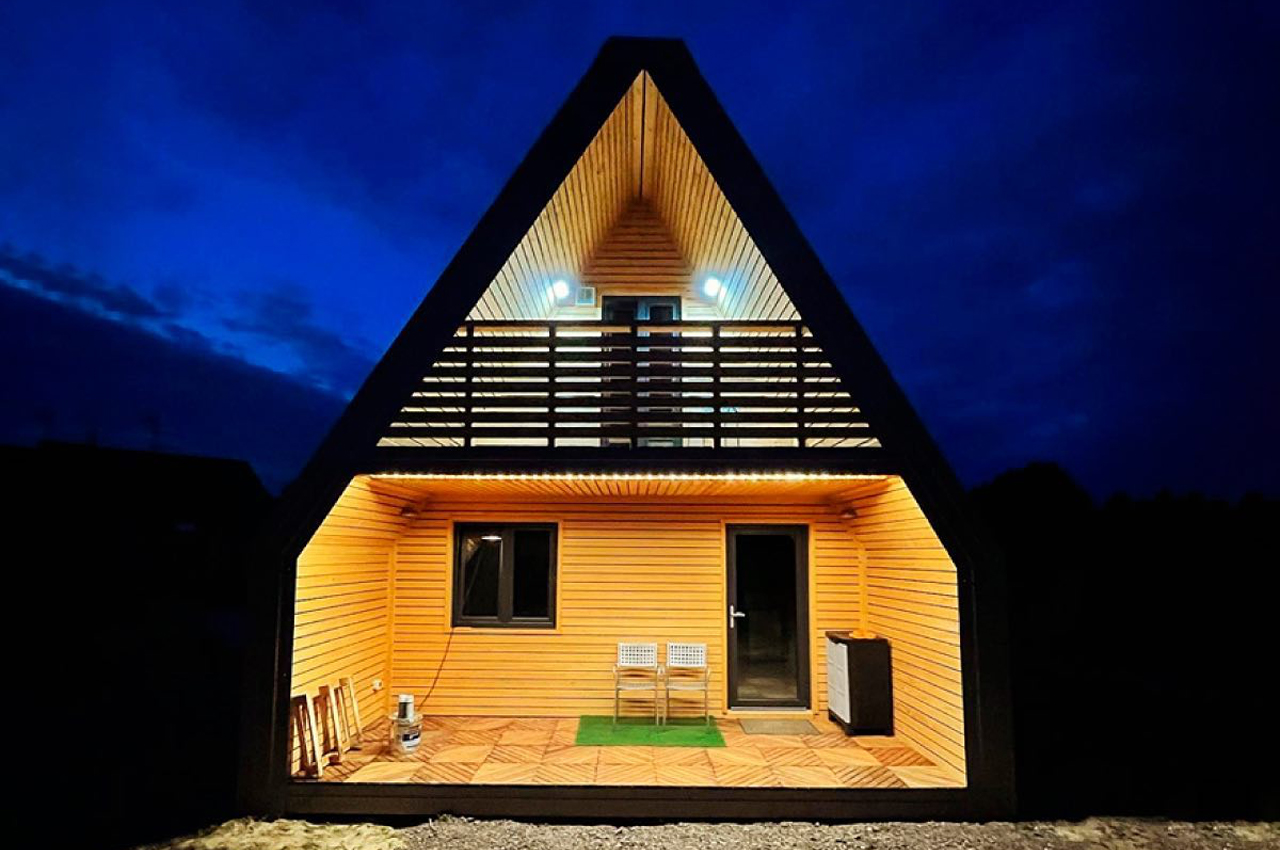
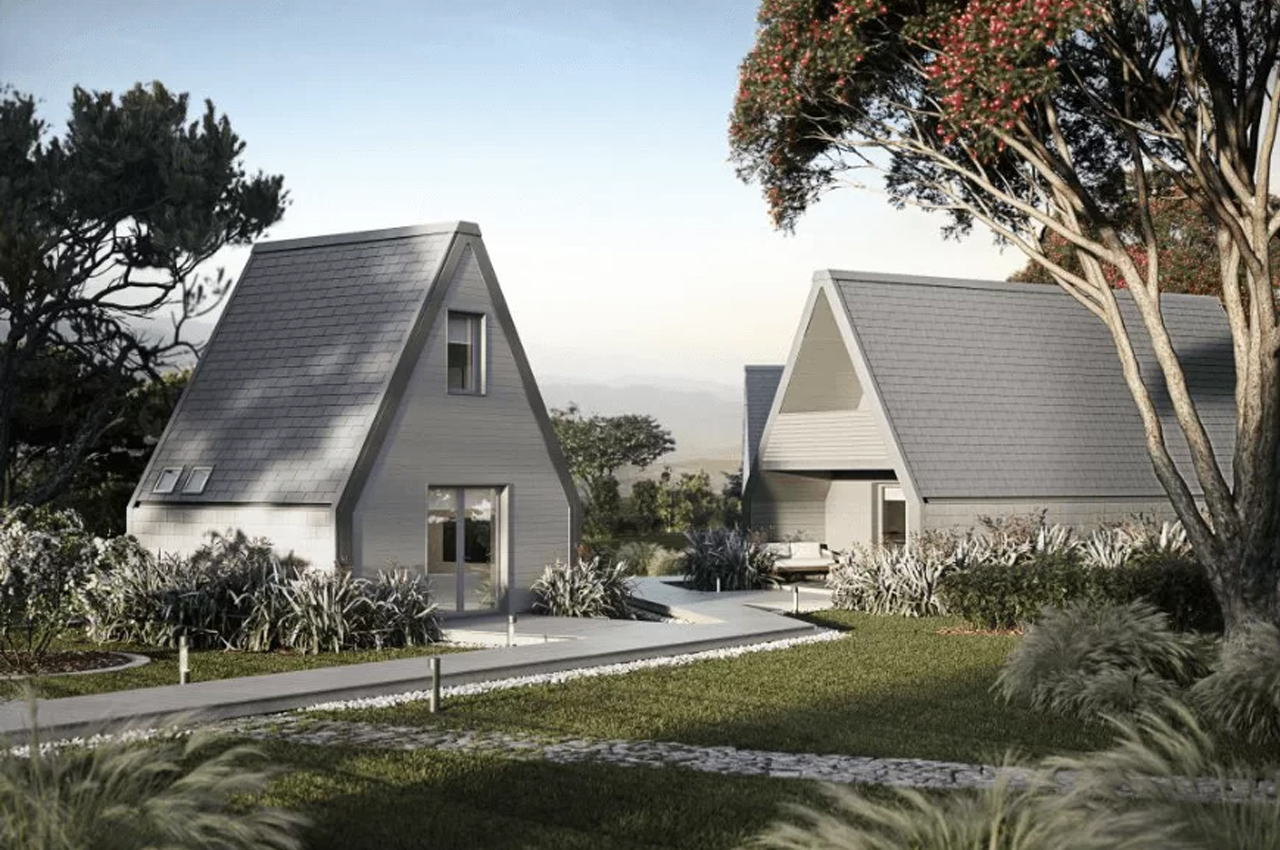
A-Fold’s line of prefabricated homes comes in two models and are designed to provide earthquake relief as well as to withstand a natural disaster. At the height of the pandemic, A-Fold launched the designs for their line of prefabricated homes that includes two bi-level cabins. Model A, the first of the two to be released, is a traditional A-frame cabin and ranges in size from 51 sqm to 125 sqm. Model T is named for its trapezoid shape and its smallest size is slightly larger than Model A’s, coming in at 52 sqm while its largest size is 127 sqm.
Why is it noteworthy?
Like most prefabricated homes, Model A and Model T from A-Fold are both constructed offsite and transported via truck to the home’s destination. Then, each home is mounted atop a screw piles system foundation, which consists of metal poles that spiral sectors are attached to and then driven deep into the ground.
What we like
- The very build of the home is built to withstand natural disasters like earthquakes through a system of massive hinge connection
- A choice between roofs – a modern look with Isogrecata metal paneling or a more traditional look with bitumen roof tiles
What we dislike
No complaints!
8. The Amagansett Modular house
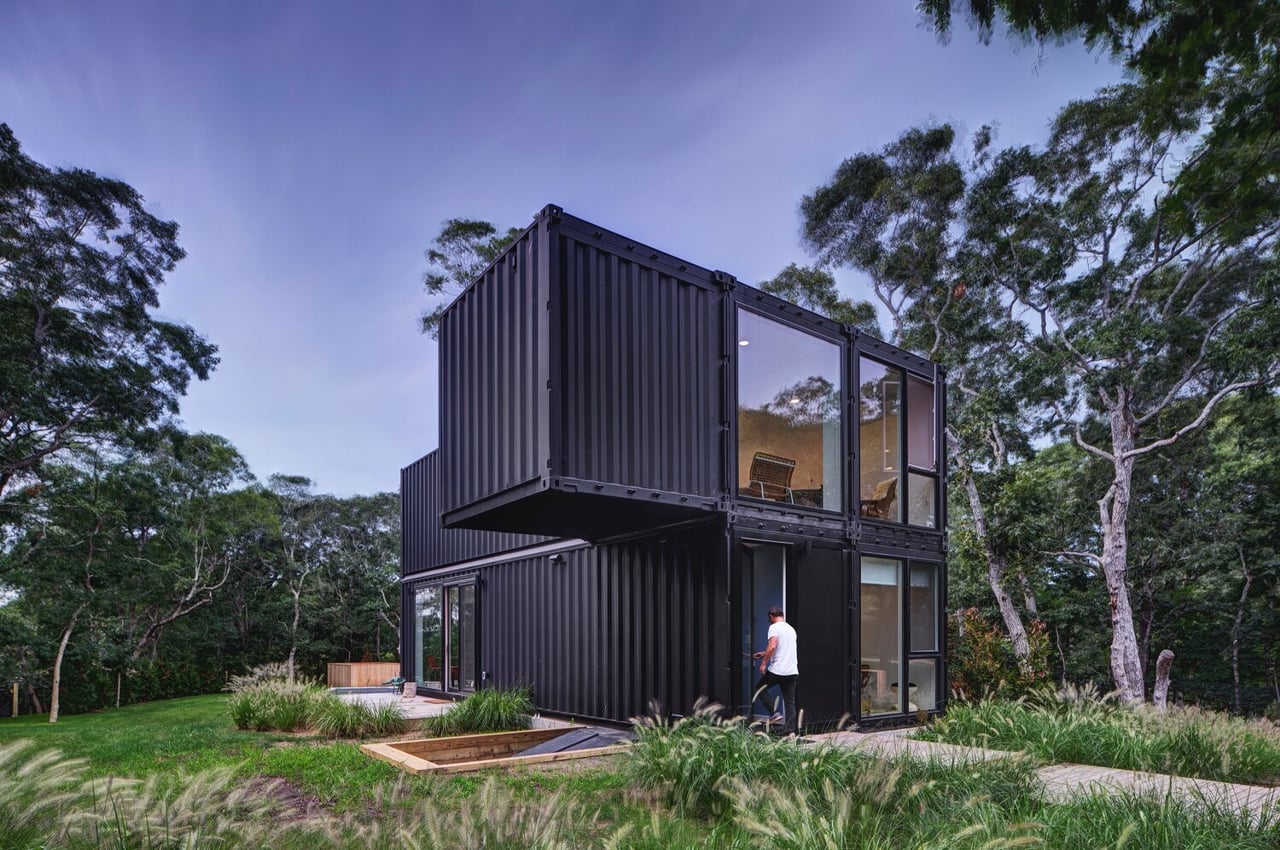
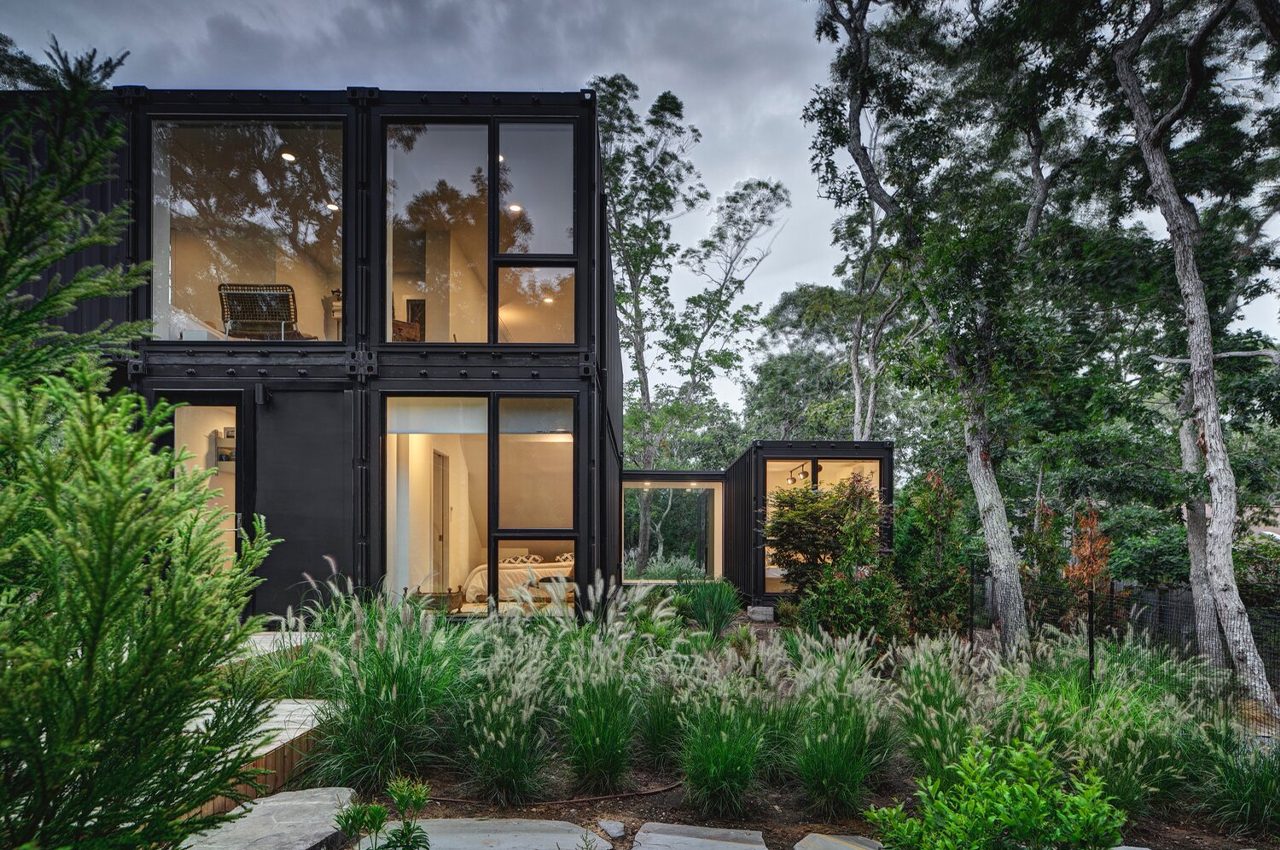
The Amagansett Modular house is a 1,800-square-foot prefabricated home constructed from stacked shipping containers. Modeled after their circa-2008 insta_house, the Amagansett Modular home is a custom design for a family of four. While the insta_house is a scalable, prefabricated structure formed from four stacked shipping containers, the Amagansett Modular house takes on two additional shipping containers to meet the couple’s requirements.
Why is it noteworthy?
Located in Amagansett’s East Hampton village, the Amagansett Modular is one of many modern homes that take disused shipping containers to construct modular houses with little waste. Considering the durable and inexpensive nature of shipping containers, they’re the ideal option for building prefabricated homes and MB Architecture is no stranger.
What we like
- Unique cantilevered structure
- Features a floating shipping container
What we dislike
- Not much to distinguish it from other shipping container-based architecture
9. Cube One

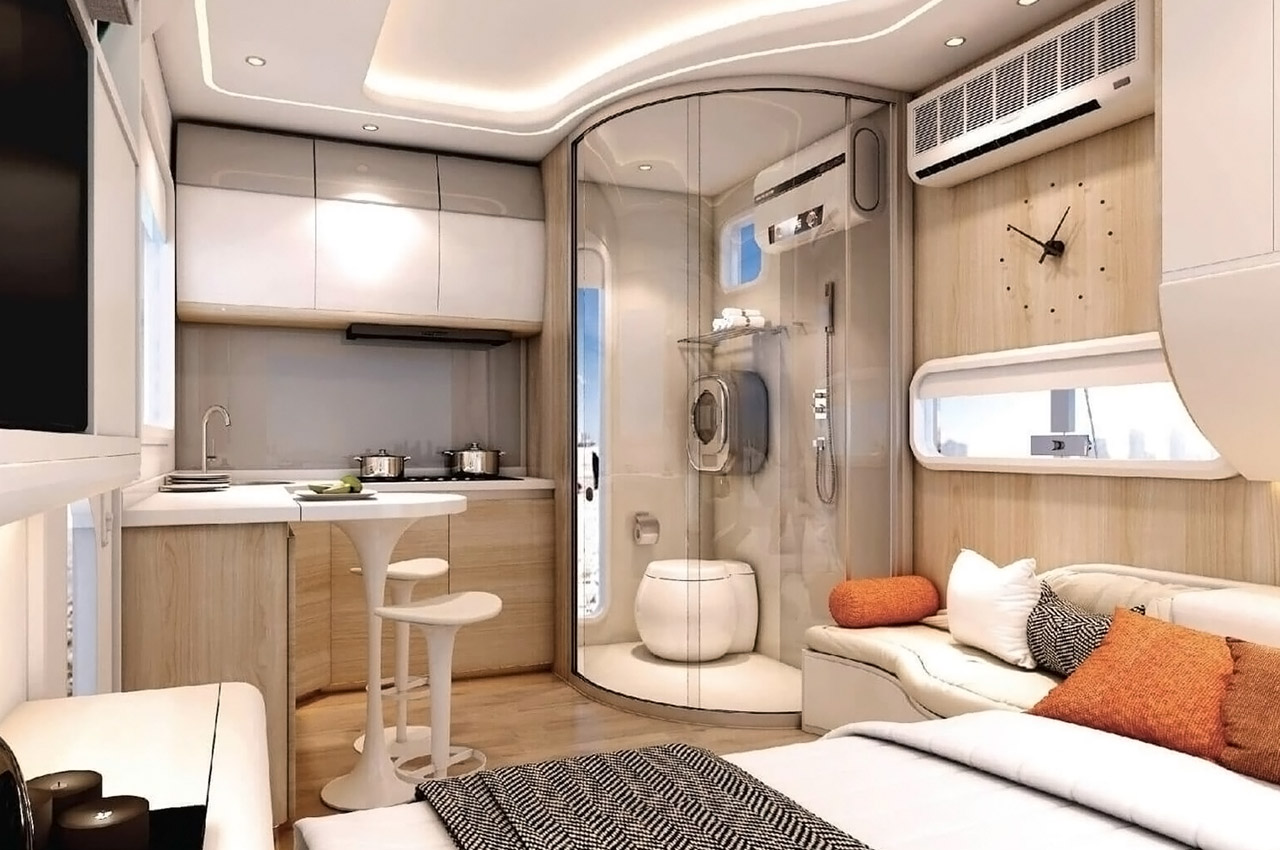
Low-cost, prefabricated, and ready to live in homes are all the rage right now! And tiny home builder Nestron has jumped on the bandwagon with their latest AI-enabled home ‘Cube One’. Cube One is a 156-square-foot home perfect for all kinds of residents – from single youngsters to large families. The value for money home has been equipped with built-in furnishings, voice-controlled tech, and a galvanized steel shell that not only lends it a sci-fi feel but also protects it from extreme temperatures and natural disasters.
Why is it noteworthy?
Much like a Rubik’s Cube, the dynamic Cube One can be customized and played around with! The interior can be customized with various add-ons and trimmings, including a kitchen with a bar counter, a wardrobe, a bed, a living area, and a shower accompanied by a toilet and laundry machine. It also comes fully equipped with smart technology which is experienced in the form of color controllable LED lighting, a television, sound system, and air conditioning.
What we like
- Built from recyclable materials
- AI-enabled
What we dislike
- Eco-friendly and sustainable elements like a compostable toilet, solar panels, and electric-heated flooring are integrated at an additional cost
10. The Friends Lab House
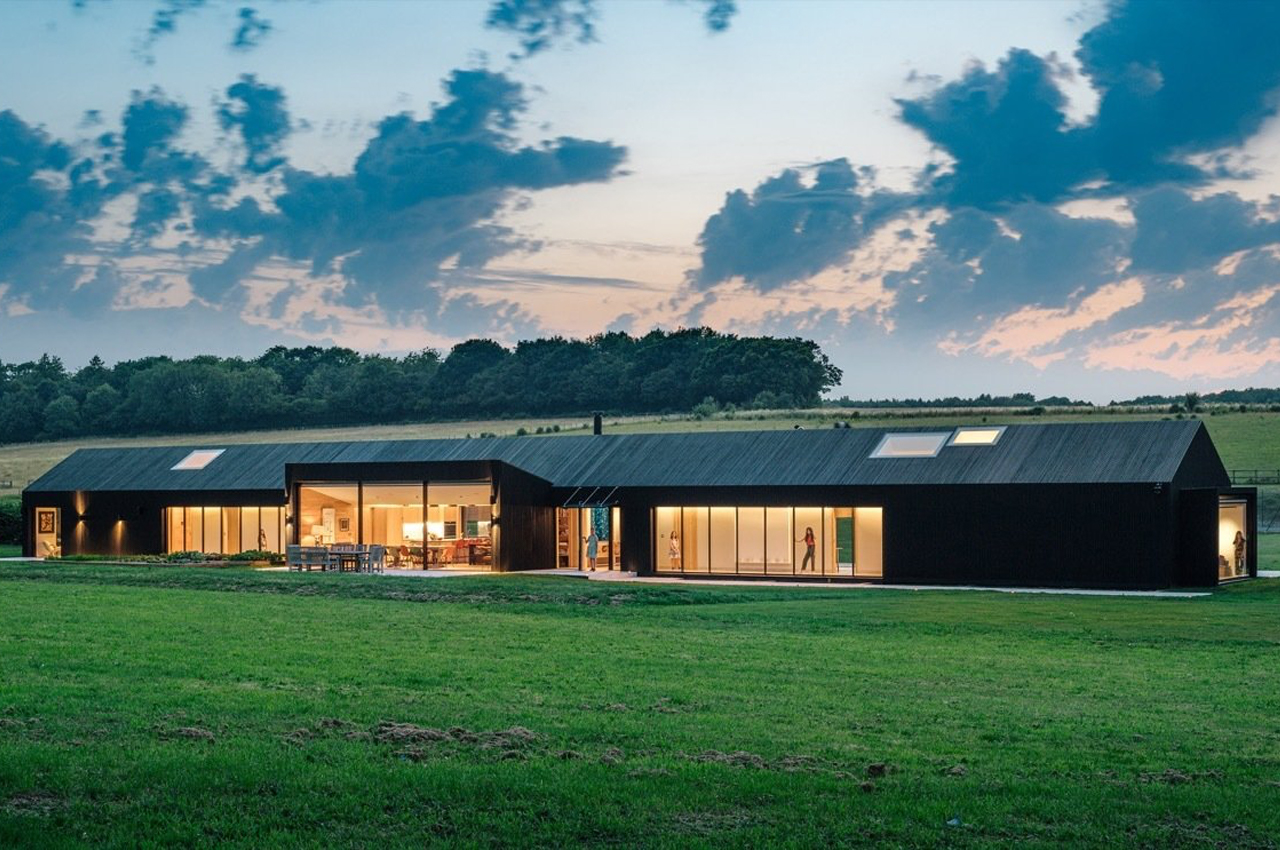
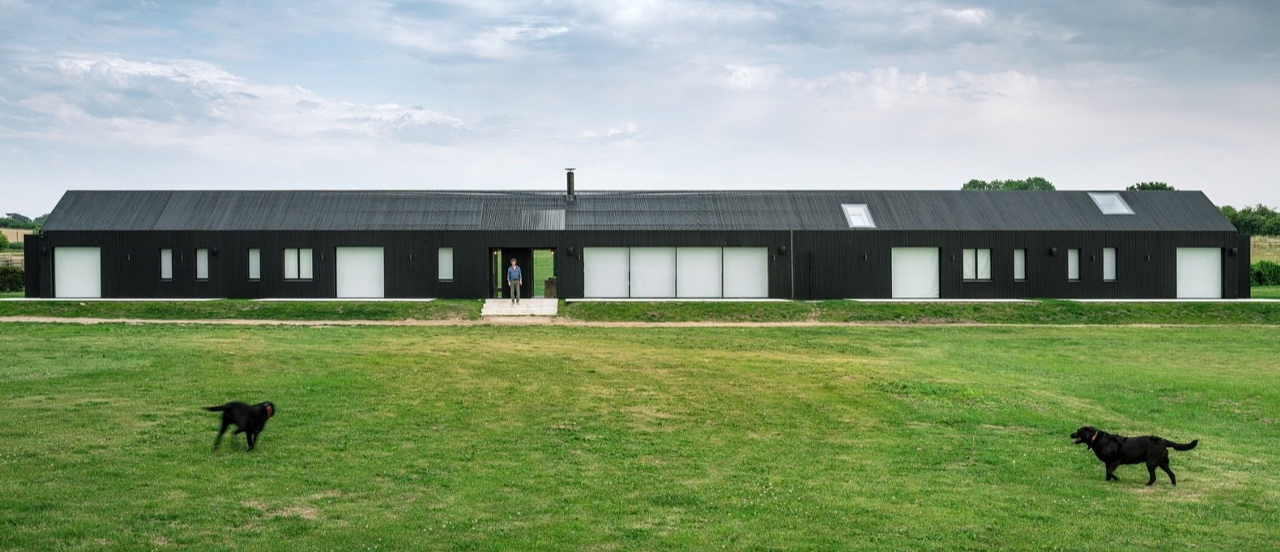
The Friends Lab House finds its veil with permeable black-stained Accoya timber batten screen cladding that hearkens back to the other blackened timber structures around the property. Just beyond the Friends Lab House, dense woodlands run parallel with the lengthy home, a subtle ode to the home’s sweeping surroundings. Describing the home’s initial plans, AMPS founder Alberto Marcos says, “A similar formal and color approach to the existing farm was used for the design of the new house, but reinterpreted in a thoroughly contemporary way, from structure to finishes and importantly, a very high level of energy efficiency.”
Why is it noteworthy?
Especially true in the wide-open countryside of Hampshire, England, new architecture must blend into its surroundings and that was one of the Friend Labs House’s residents’ main requests. In addition to building an expansive, sustainable home, AMPS ensured the residence would harmonize with its surroundings by mirroring the look of the farm’s other homes.
What we like
- Outfitted with energy-efficient specs needed for a self-sufficient home
What we dislike
- Traditional aesthetics



